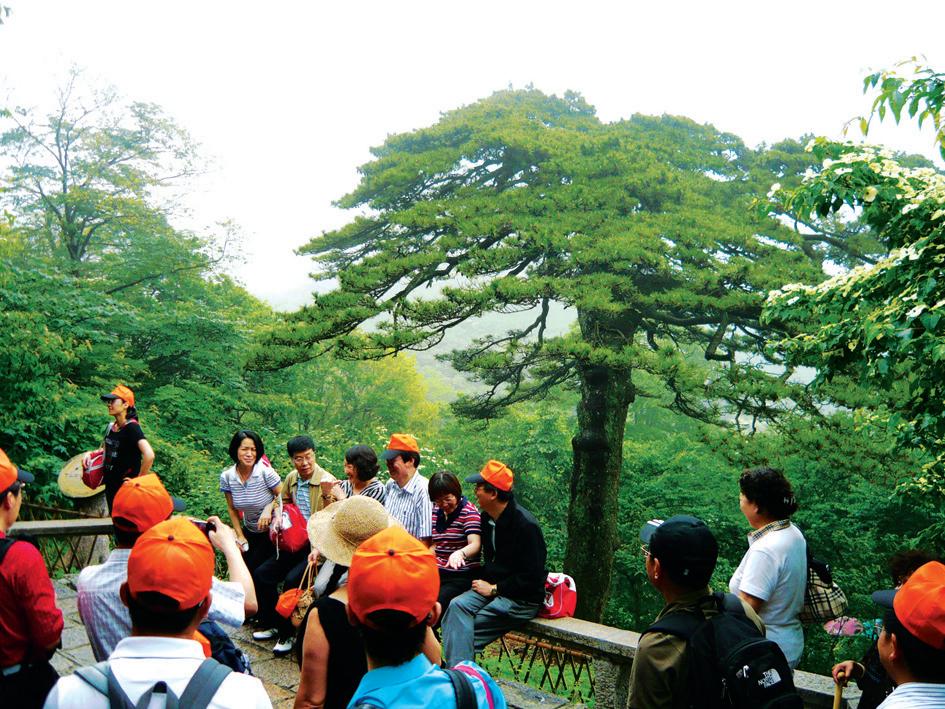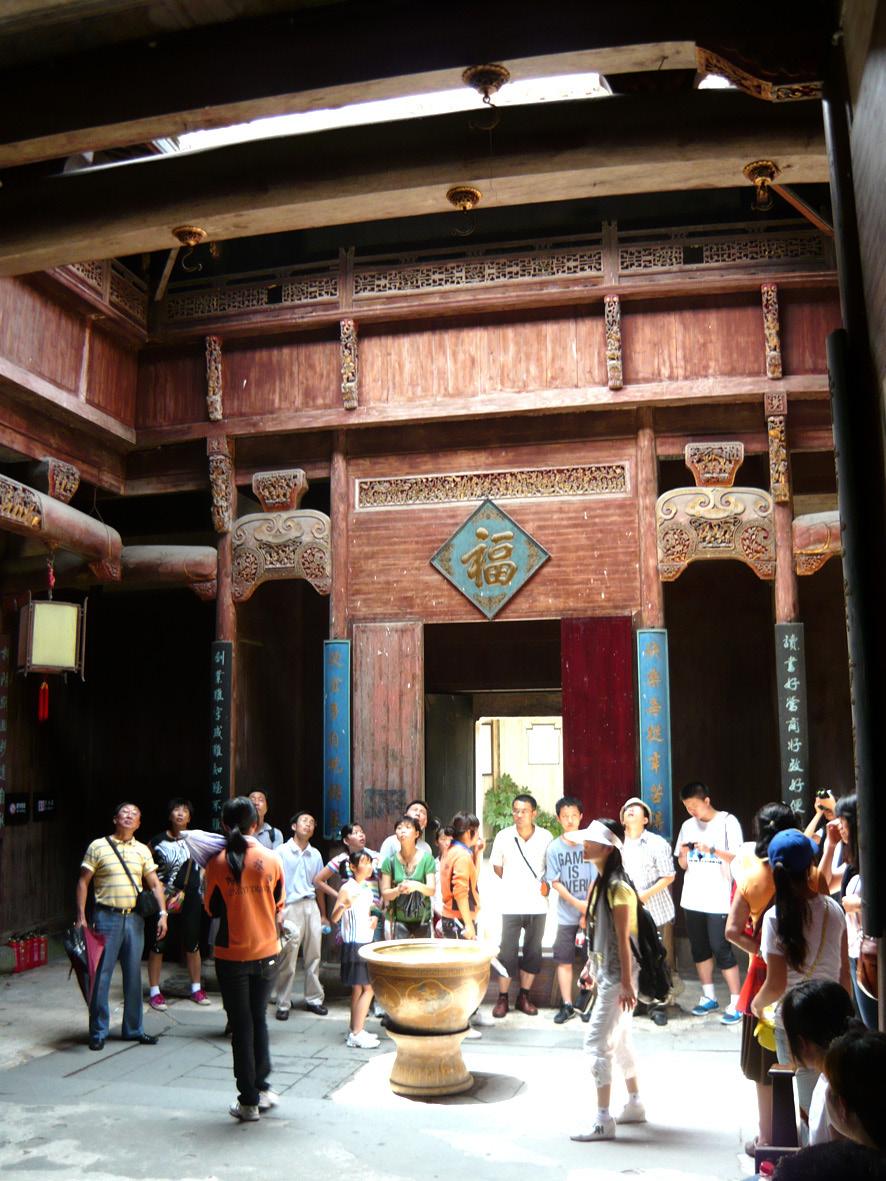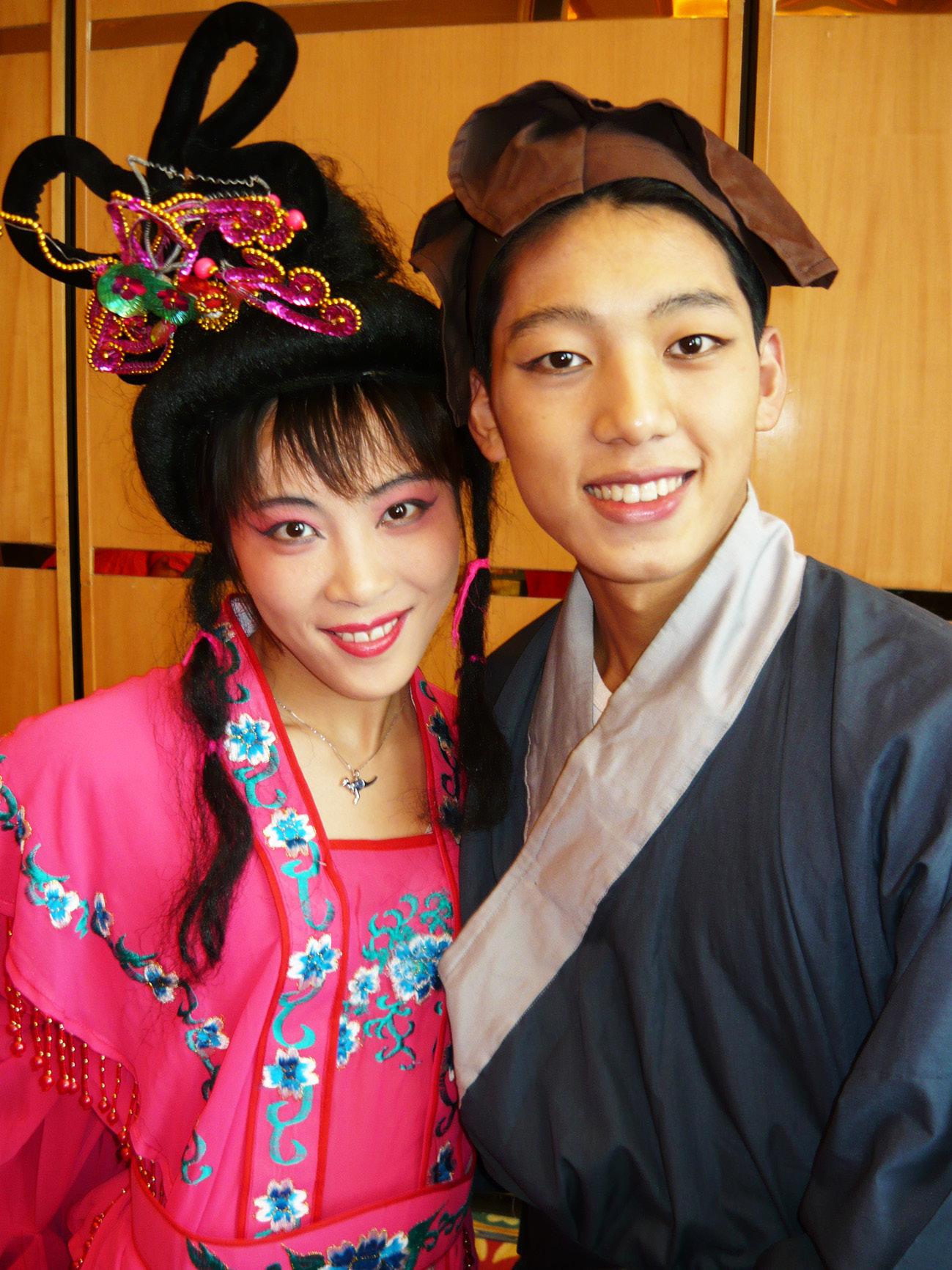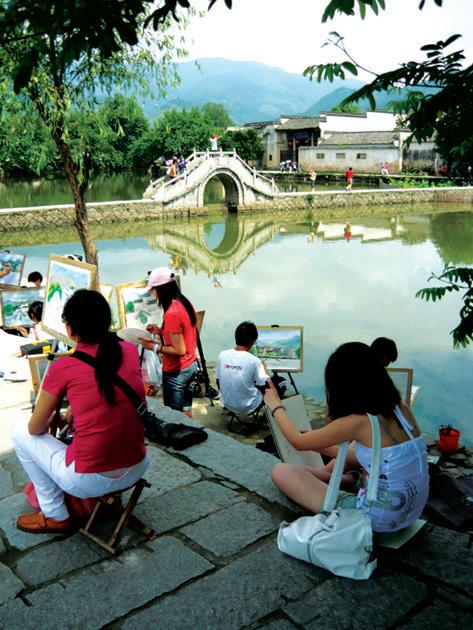
5 minute read
Away to Anhui
from 2010-08 Melbourne
by Indian Link
A charming town in China is steeped in natural and man-made wonders
By THOMAS E KING
Since ancient times Mt Huangshan in China’s southern Anhui Province has been called the “No. 1 Mountain under Heaven”. Noted for twisted pines, grotesque rock formations, a cloud ‘sea’, crystal-clear hot springs and winter snow scenery, these attributes considered “the five sublimes of Huangshan Mountain” have long been creative influences for painters and poets. These days, the picturesque massif in southern Anhui Province still attracts artists, but it’s also China’s must-see mountain for visitors from around the world.
During previous visits to China I had seen the first two attractions on the country’s list of prestigious natural scenic spots: the Three Gorges on the Yangtze River and the Guilin Li River Scenic River. Excitement intensified as the kilometres clicked by during the 500 km road journey between Shanghai and Huangshan City, as I would soon see another highly regarded sight.
I finally arrived in the 1.8 million-strong provincial centre where ample tourism facilities ensure visitor comfort. After a relaxed night I was off the next morning for the hour-long drive to Tangkou, a small town at the foot of the mighty mountain. Shuttle buses continued on to the Yungu Cable Car Station, where I boarded a sleek glass capsule for the journey up the mountain side.
Mt Huangshan is actually a mountain range extending over 1200 sq. km and was formed around 100 million years ago when an ancient sea disappeared due to a rise in the land
Two misconceptions were immediately dispelled upon reaching the top and stepping out onto the mountain: it’s not yellow nor is there a solitary summit. The name came from an imperial decree in 747 AD when Mount Yi – Black Mountain –was rechristened as Mt Huangshan to honour Huang Di, a legendary Chinese ruler known as the ‘Yellow Emperor’.
As for being a solitary summit, some 72 named peaks each soar higher than the next. Lotus Peak is the loftiest at 1864 metres, with Bright Summit Peak and Celestial Capital Peak rounding out the trio.
Mt Huangshan is actually a mountain range extending over 1200 sq. km and was formed around 100 million years ago when an ancient sea disappeared due to a rise in the land. The hunk of Mesozoic granite was later shaped and smoothed by glacial action. Over time, fissures and fractures appeared on exposed surfaces. Miraculously, a robust plant found such a harsh place to be an ideal location to thrive.
Huangshan pine is indigenous to the mountain. Thousands of pines are more than 100 years old with one gnarled veteran I saw having celebrated an estimated 1200 summers! While another veteran called Black Tiger Pine is also revered for its age, there is added interest. Though it’s just 7.5 metres high, its crown spreads out in the clean fresh air to somewhat resemble a tiger. An odder characteristic is that this particular pine when viewed from certain angles, roughly resembles the Chinese character for ‘tiger’.
Mt Huangshan is a veritable botanical garden with more than 1450 recorded varieties of plants including endemic pines and Chinese hemlock. As well, the mountain is home to more than 550 types of mammals including Tibetan Macaques. I saw plenty of pines but no primates while venturing along some of the 50 km of footpaths that link peaks with canyons.
An estimated 60,000 stone steps have been carved into the mountain with some dizzying pathways and solid staircases believed to be over 1500 years old. Many scholars of old walked these stones when they came to admire enchanting mountain landscapes, create paintings, compose poems or make pilgrimages to sacred sites.
Considered one of five holy mountains in China, Buddhism was introduced around 420 AD with 100 temples subsequently built on its pine-padded slopes. Many of the still remaining structures are of interest to modern day pilgrims and visitors. In all, there are more than 200 surviving temples, pavilions, pagodas, passageways, stone sculptures and ancient bridges.
I stopped at one old stone bridge where literally thousands of rusty padlocks had been affixed to its railings. This practice, I learned, is still observed by newlyweds who pledge their eternal allegiance to each other on this most spiritual mountain.
Even from a distance, the grandeur of Yellow Mountain is awe inspiring. Those living within view of the fabled mountain are indeed fortunate, I thought, retracing the cable car journey down a cloud-shrouded slope and proceeding to an ancient hamlet at the foot of range in the Huīzhōu region of southern Anhui.
Described as “a unique, cow-shaped ancient village”, Hongcun is unlike any other place I have ever seen in China. During the Song Dynasty (960 – 1279), the ingenious villagers of Hongcun constructed a complex water system to supply clean water for household use, the irrigation of their fields and fire prevention.
While it’s not readily apparent, the whole village spread over 30 acres is actually more like a water buffalo lying on its side surrounded by green hills and blue water. Dwelling houses form the body, nearby Leigang Hill is the head while two tall trees are the horns. South Lake just beyond the cluster of houses is the ‘stomach’, while waterways spread out like ‘intestines’.

1. A sea of cottony clouds nuzzles winding mountainside paths of mighty Mt Huangshan.
2. Located in the heart of Hongcun, Chengzhi Hall is covered with delicate sculptures.

3. Visitors take a break from mountain walks to pause for photos before Black Tiger Pine.
4. Typical to the province, traditional Huangmei Opera combines local folk songs and music.

5. Talented artists gather at Hongcun’s South Lake to paint classic scenes of old China.

Narrow alleyways crisscross the village and I trod along well-worn flagstones while passing some of the 140 buildings that remain from the 14th to 19th centuries. The distinct architecture typical of Huīzhōu culture was highly visible. On the outside, homes have whitewashed walls and black tile roofs many with horse head gables. On the inside, most homes are furnished with carved wood panels and have cosy interior courtyards.
There are several attention-getters in Hongcun like the circa 1855 Chengzhi Hall, a marvel of China’s ancient architectural arts. Detailed with refined wood, brick and stone carvings and praised as the “royal palace outside of the Forbidden City” it’s open to visitors unlike most of the other old homes which are still private residences.
Many home owners have opted to become entrepreneurs. I saw residences with artisans working at doorstep workshops to carve bamboo and horn into jewellery and ornaments. Elsewhere, several home shops stocked locally processed green tea. Grown on the fertile mountain slopes, Maofeng tea has been an important cottage industry for generations.
Meanwhile, other owners were carving slabs of slate which would be used later by artists to hold ink for writing, calligraphy or delicate ink paintings. Additional shopkeepers sold guidebooks and postcards or snacks and cold drinks to the continuous throng of hungry and thirsty visitors.
World Heritage Listed, Hongcun has been widely praised over the centuries as “a village in Chinese paintings”. This continues in ‘oils’ because on fair weather days a long row of artists take up prime positions under trees lining the bank of the bow-shaped South Lake. With brushes in hand I watched them create realistic likenesses of the quaint stone bridge, an idyllic lake and the historic houses of Hongcun. As I happily discovered, these lures are only a small part of a truly special place that has been officially gazetted as “One of the Ten Most Charming Towns in China”.









